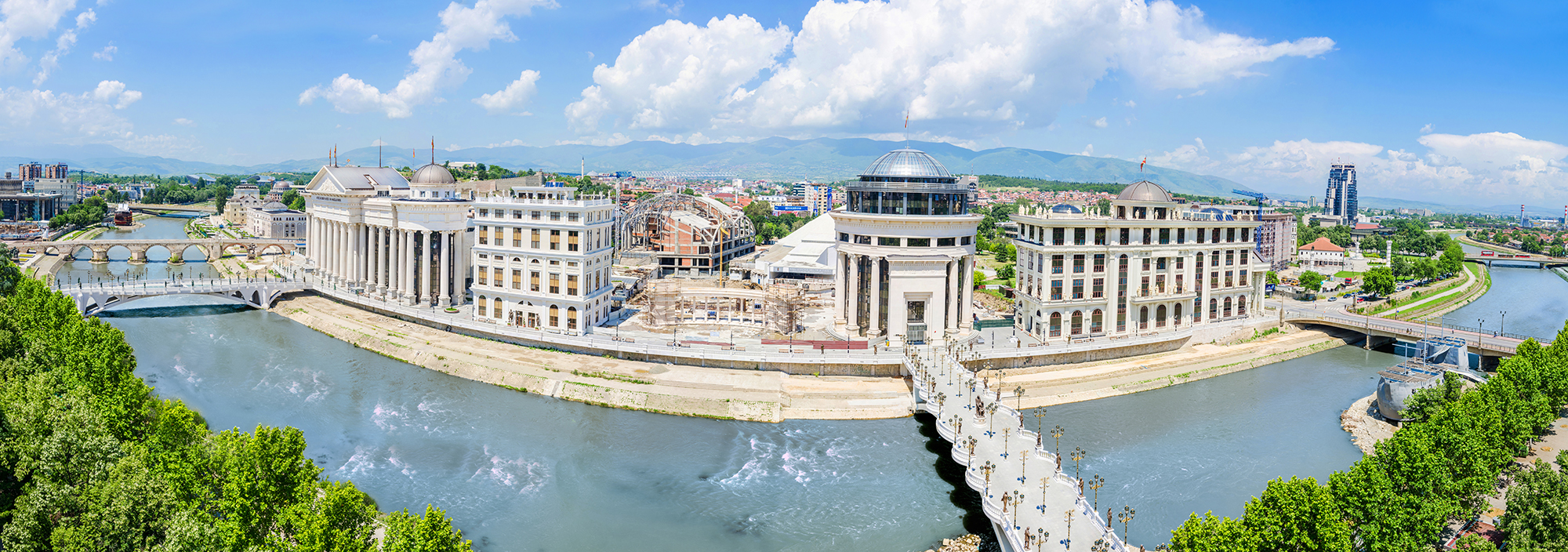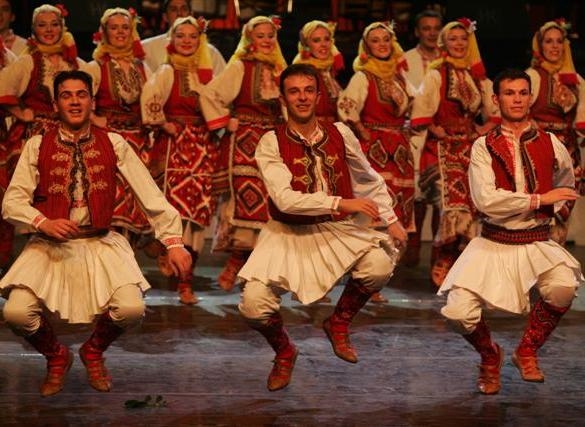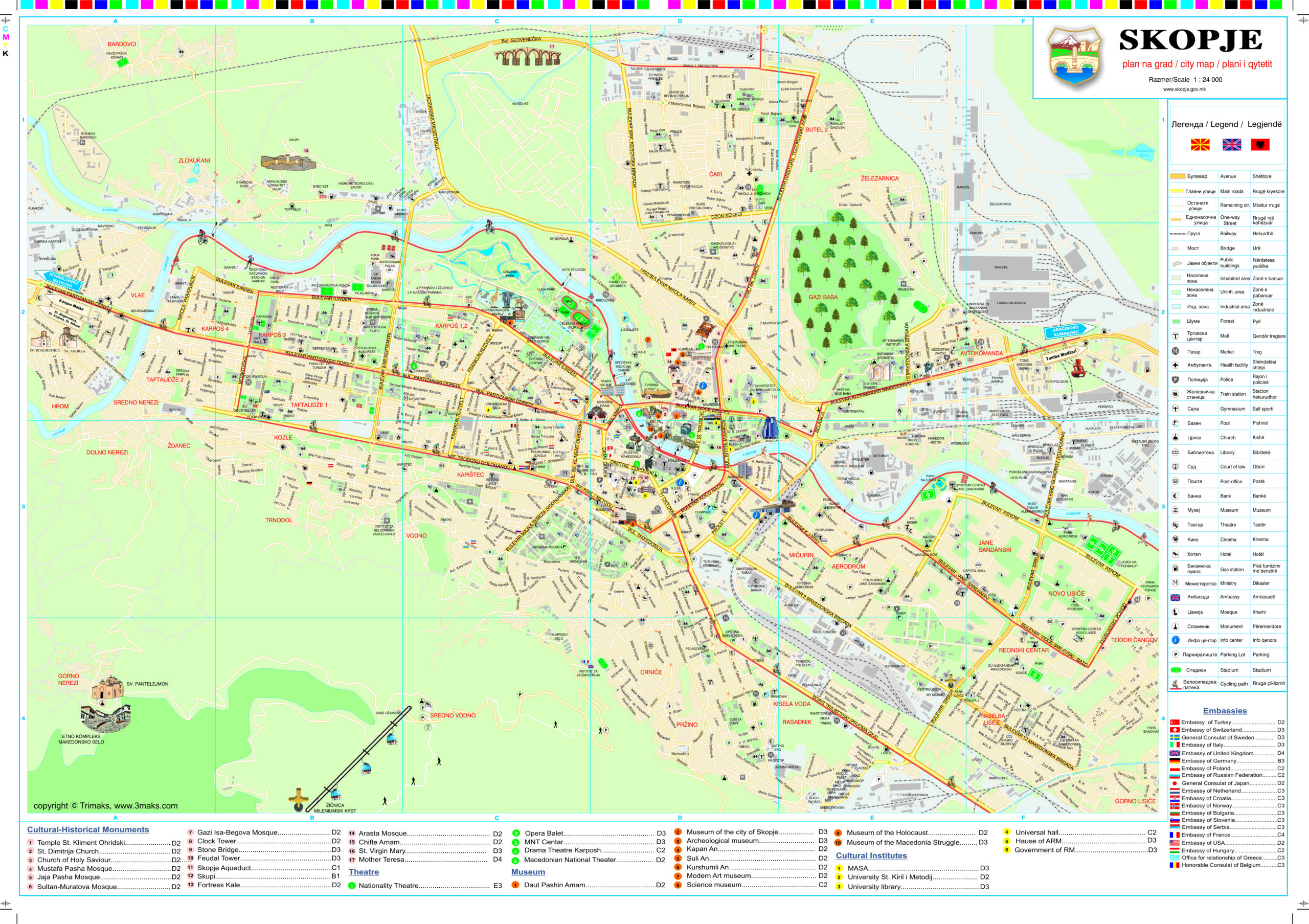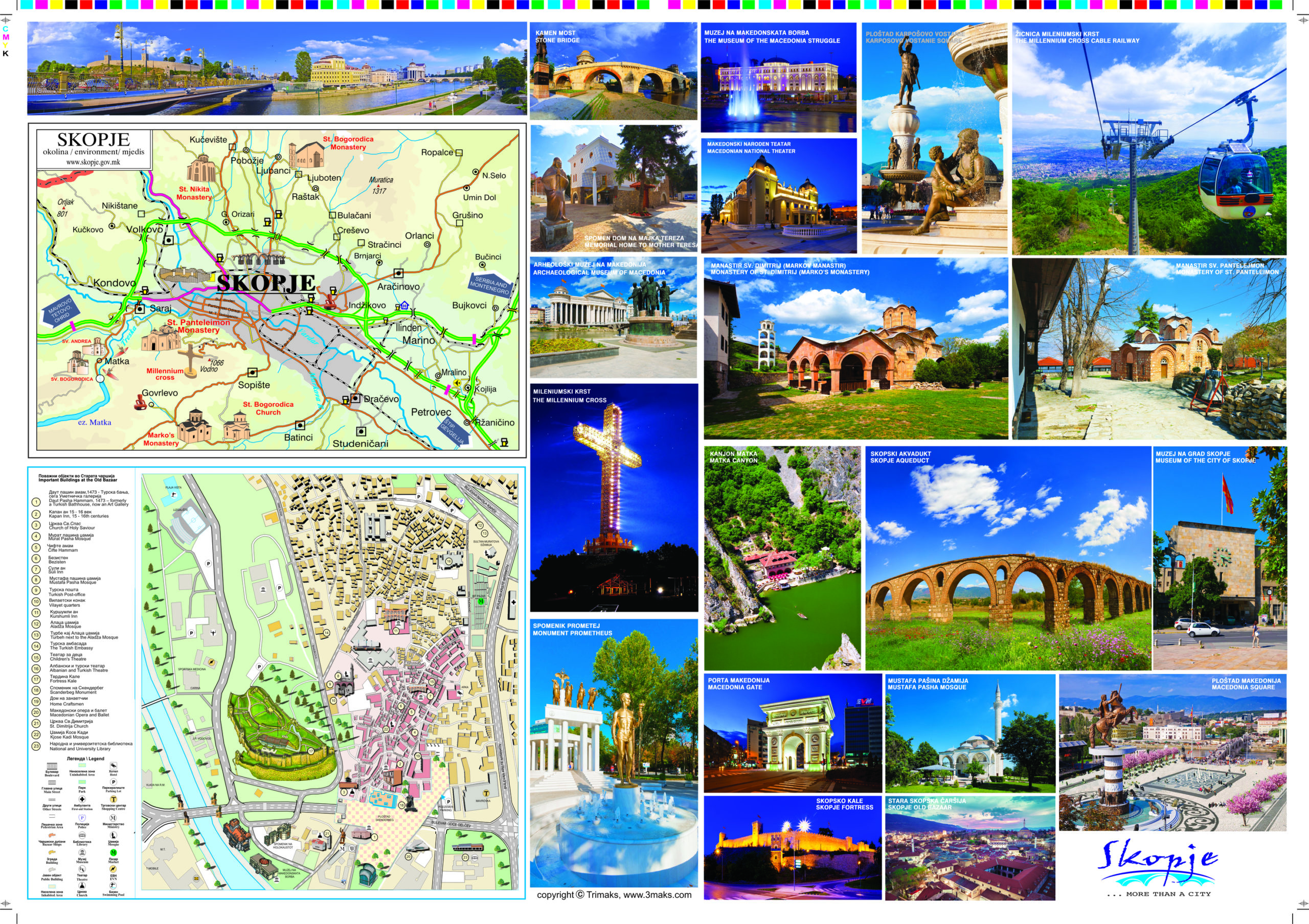
About Skopje
Skopje, cultural and economic center of North Macedonia
The City of Skopje as the country’s capital, and the largest city nationwide, is an administrative, commercial, cultural, educational and scientific center. The city in the course of its existence, depending on the historical circumstances, was named by different names, and its ancient name is Skupi.
Skopje’s development was hindered and altered by a devastating earthquake that hit the city on 26 July, 1963. It caused enormous damage in the city and killed 1,070 people, injuring 3,300 others. Many educational facilities, factories and historical buildings were destroyed. Reconstruction was finished by 1980, and Skopje’s cityscape was drastically changed. The city became a true example of modernist architecture.
Today, Skopje is a vibrant city with a very diverse cultural scene, hence one could see a large collage of different architectural styles. The mix of the ancient, old and modern, new. Skopje is an ethnically diverse city, and its urban sociology primarily depends on ethnic and religious belonging. Over the years, and influenced by many different and shifting regimes and cultures, the town has turned into a multi-facetted and vibrant city, where a mixture of ethnic and socio-economic groups gives the city a specific character. The city is the sum expression of civil society, the character of the people and institutions that define the experience of working, multi ethnic living and being in the city.




